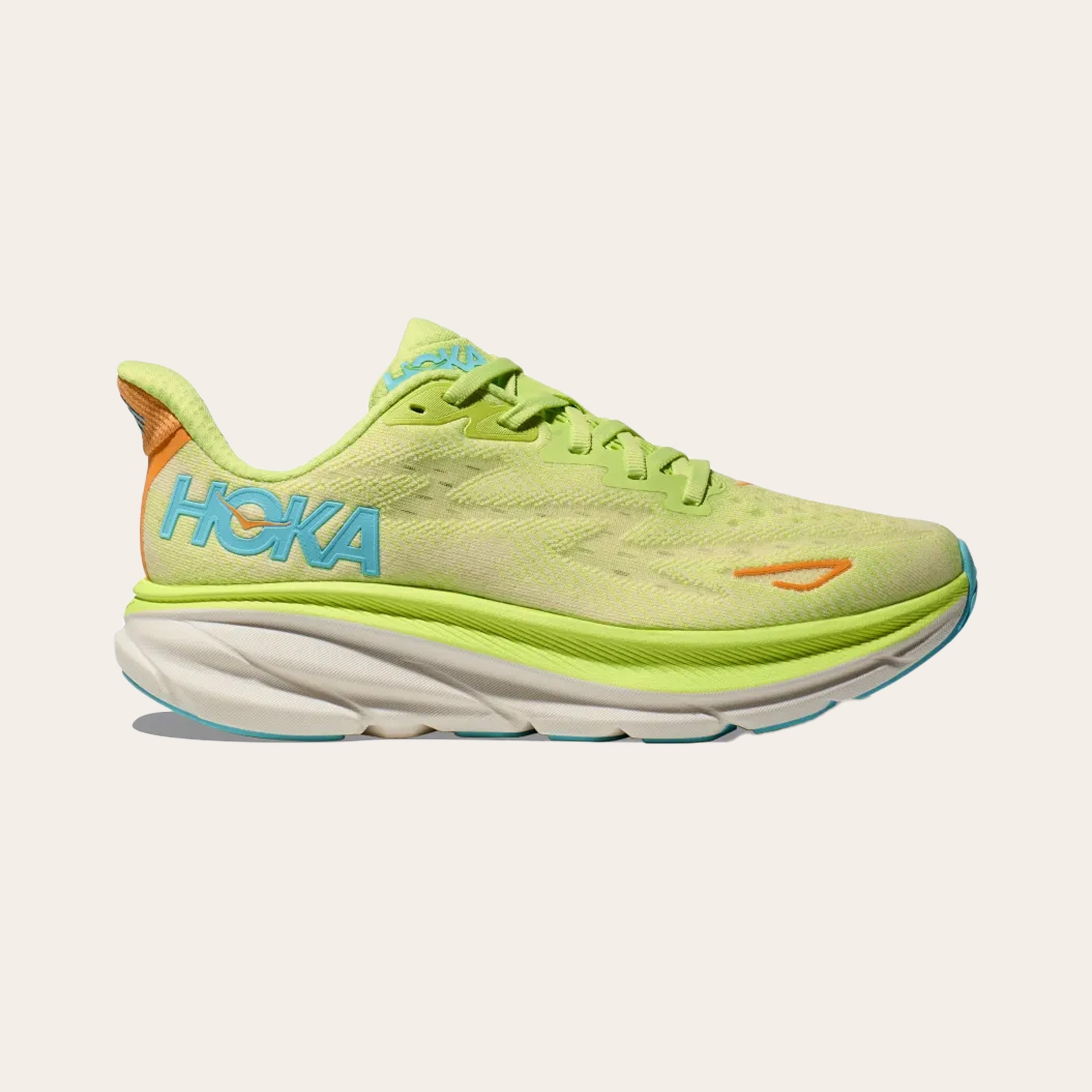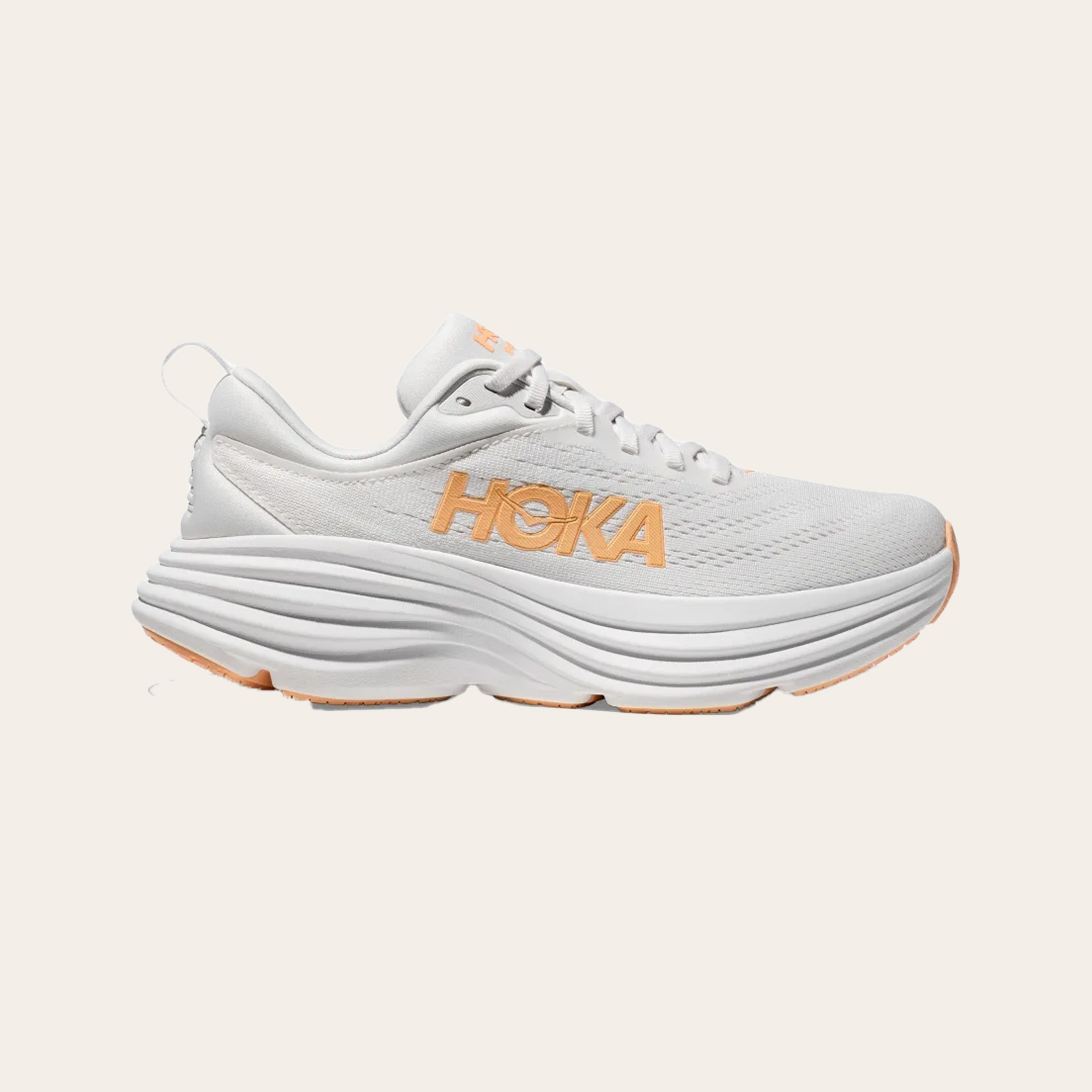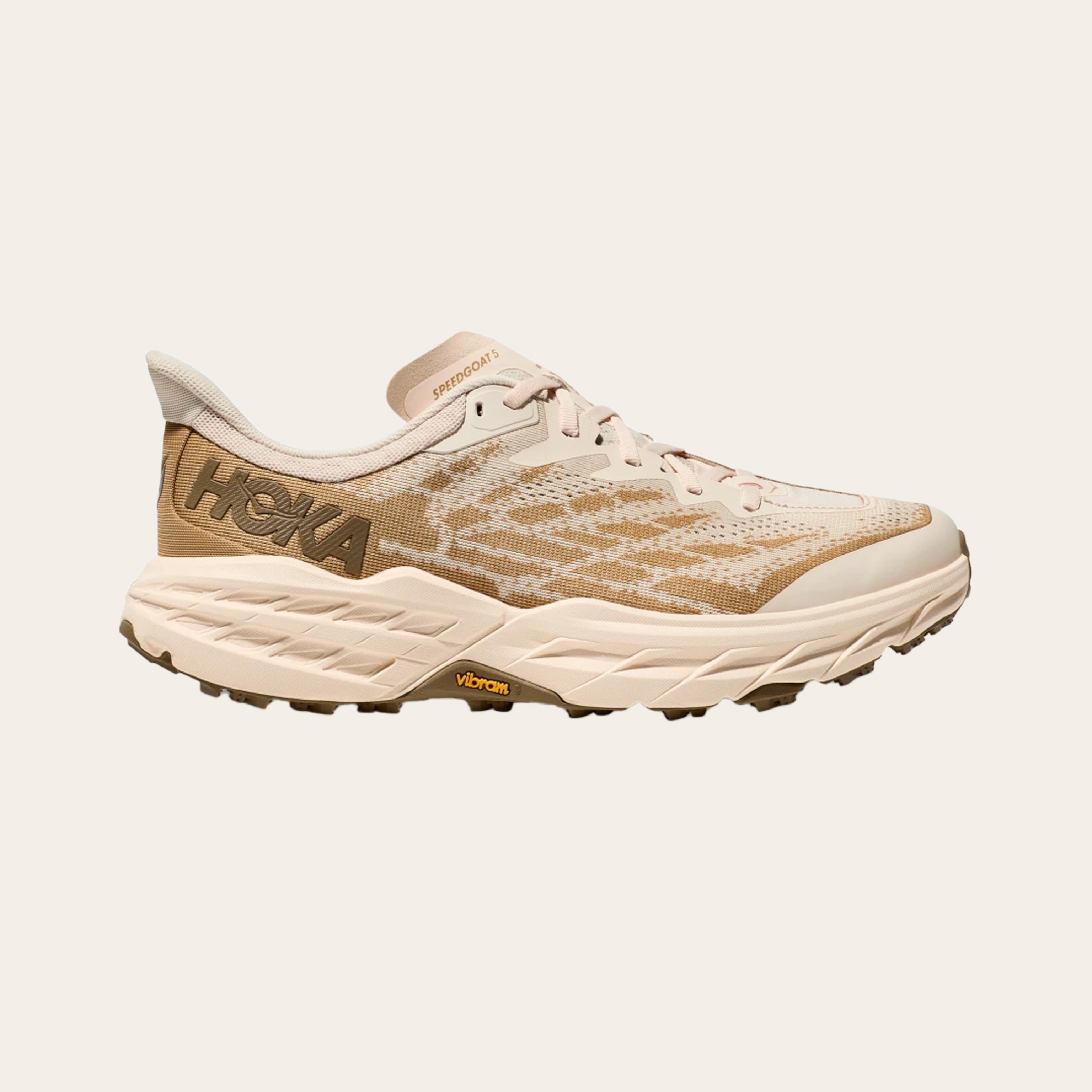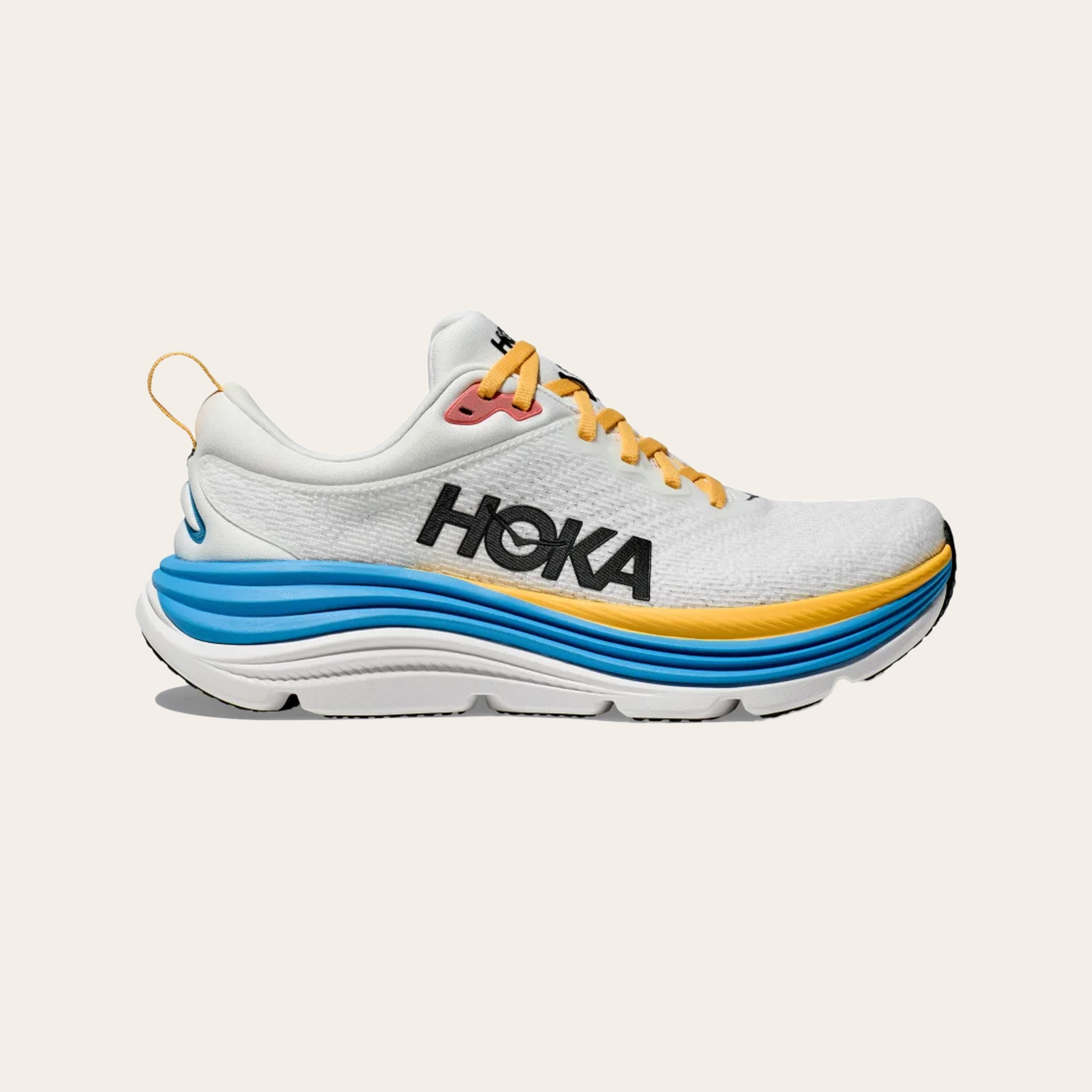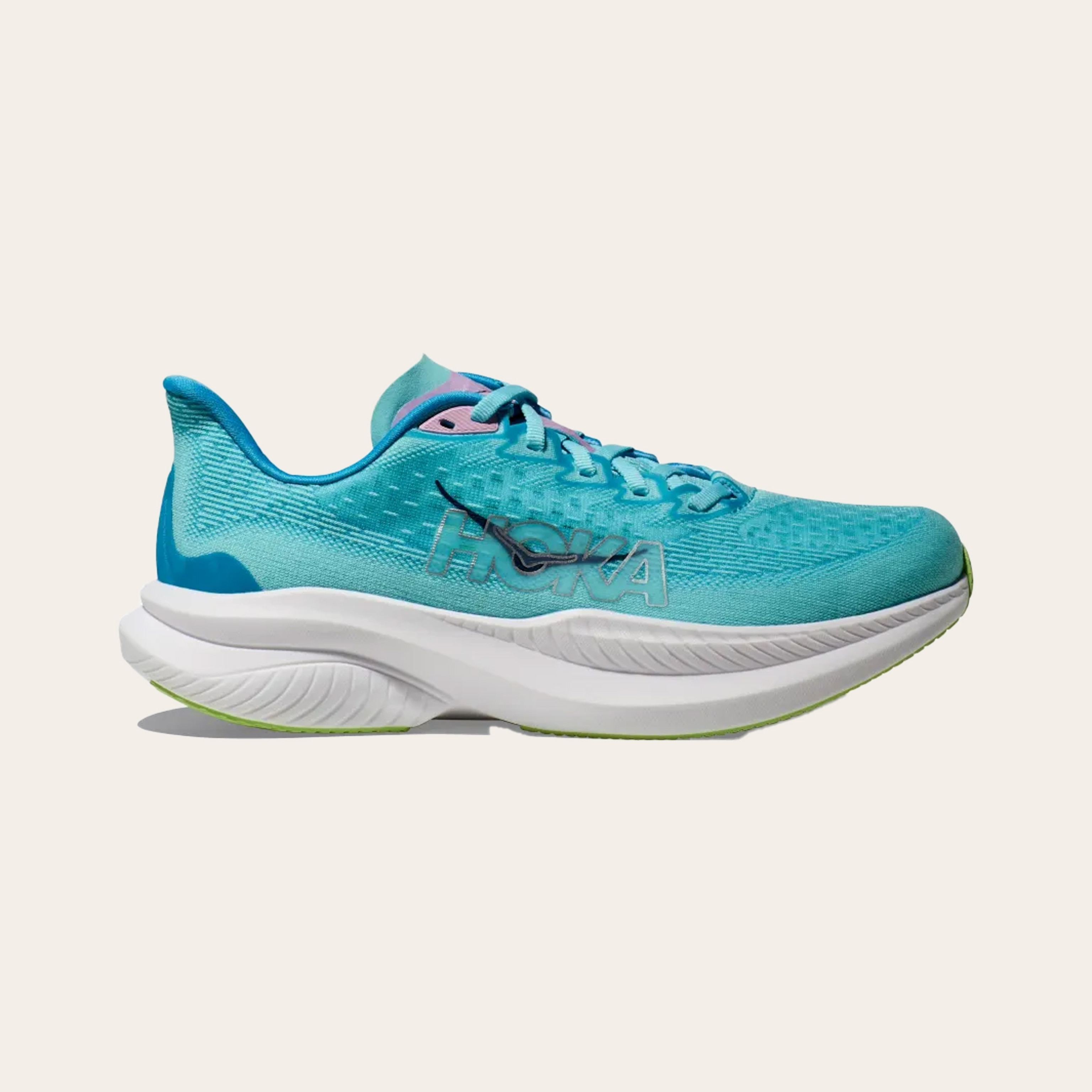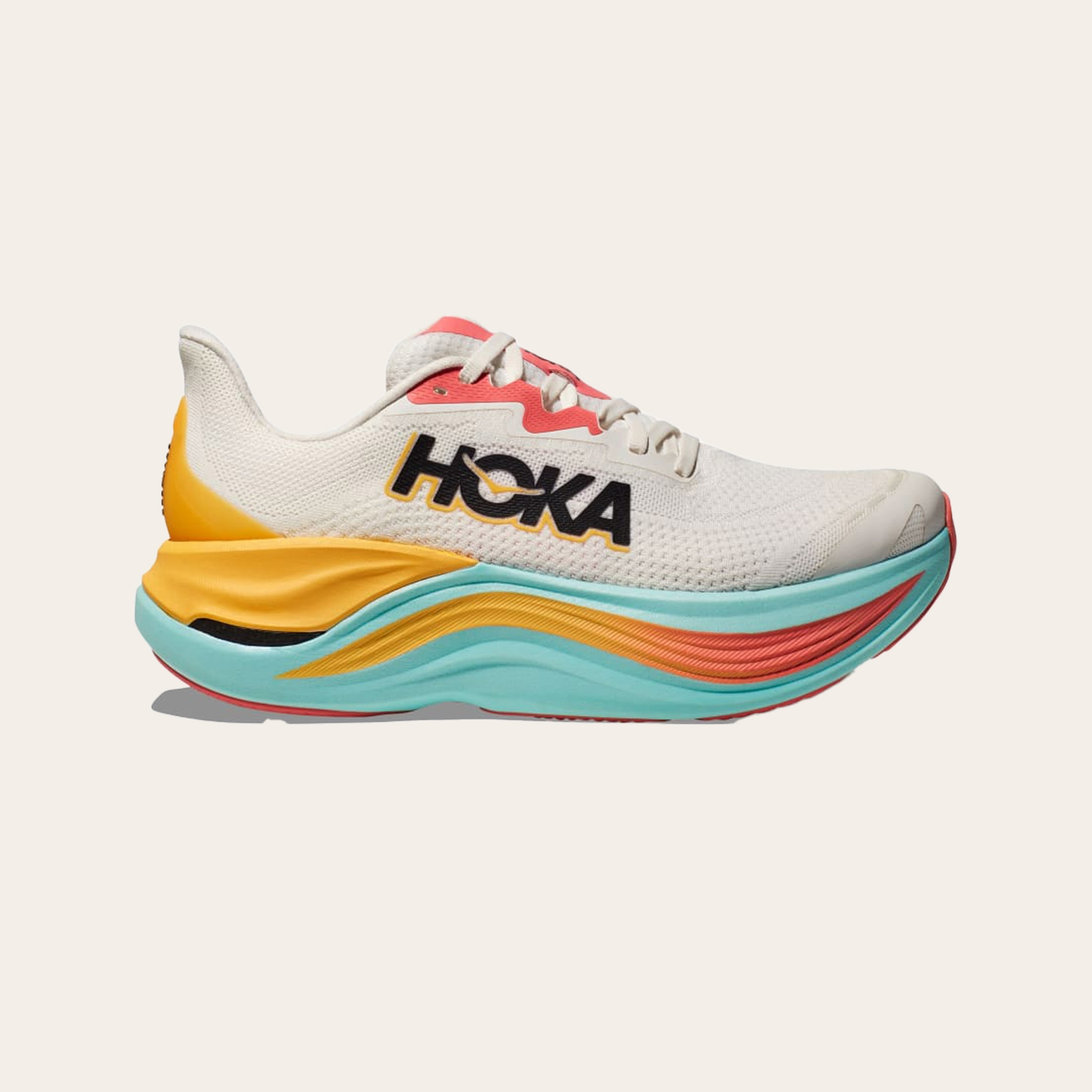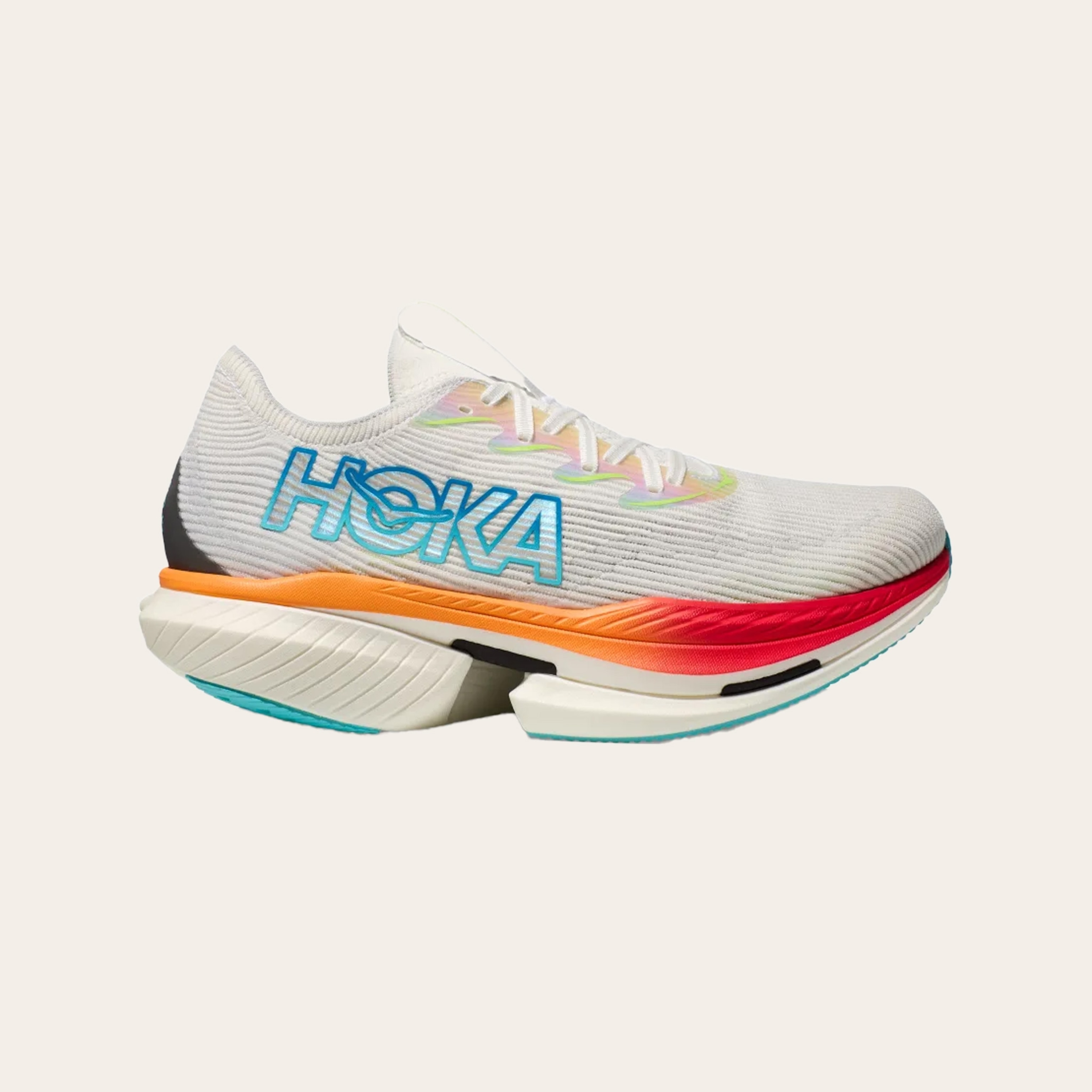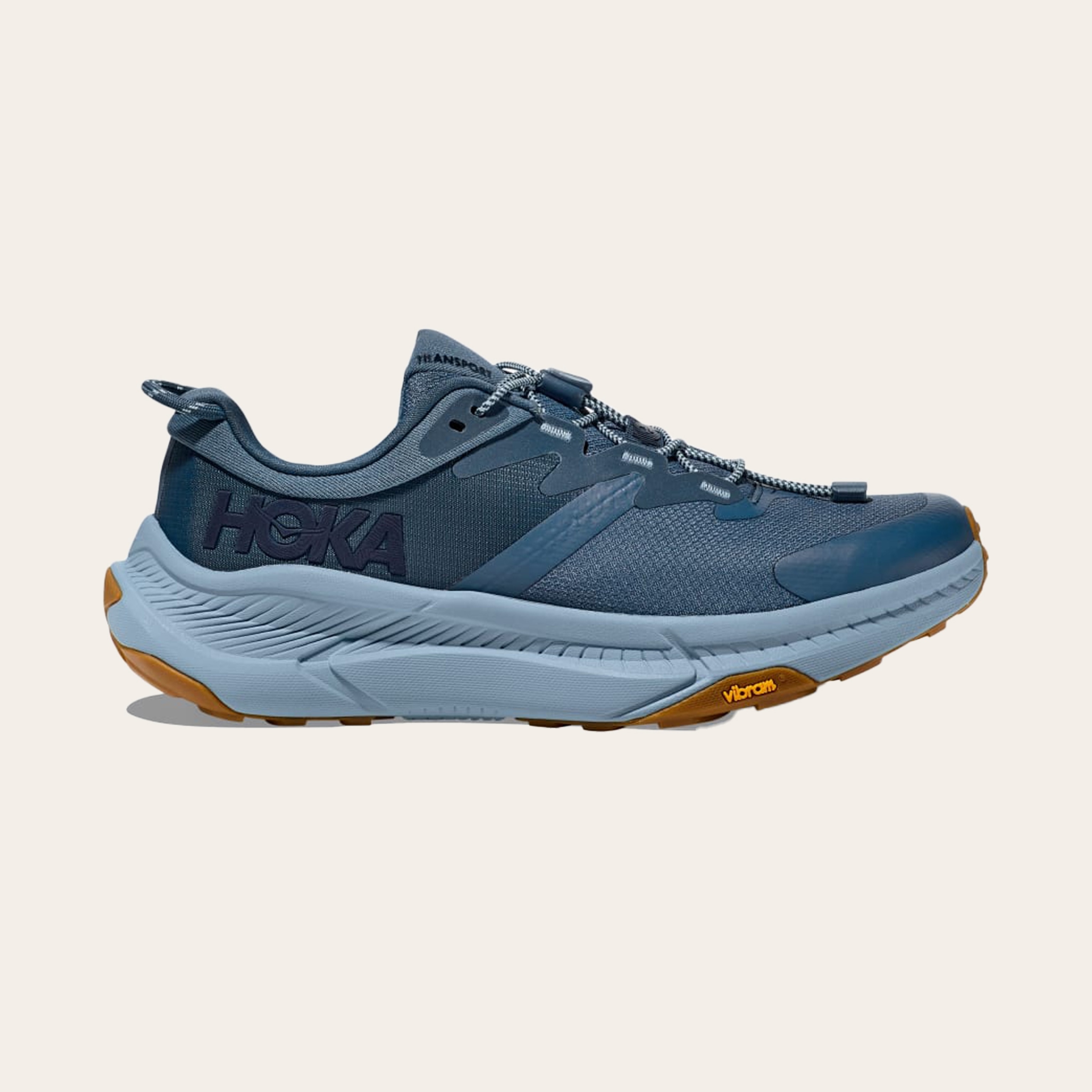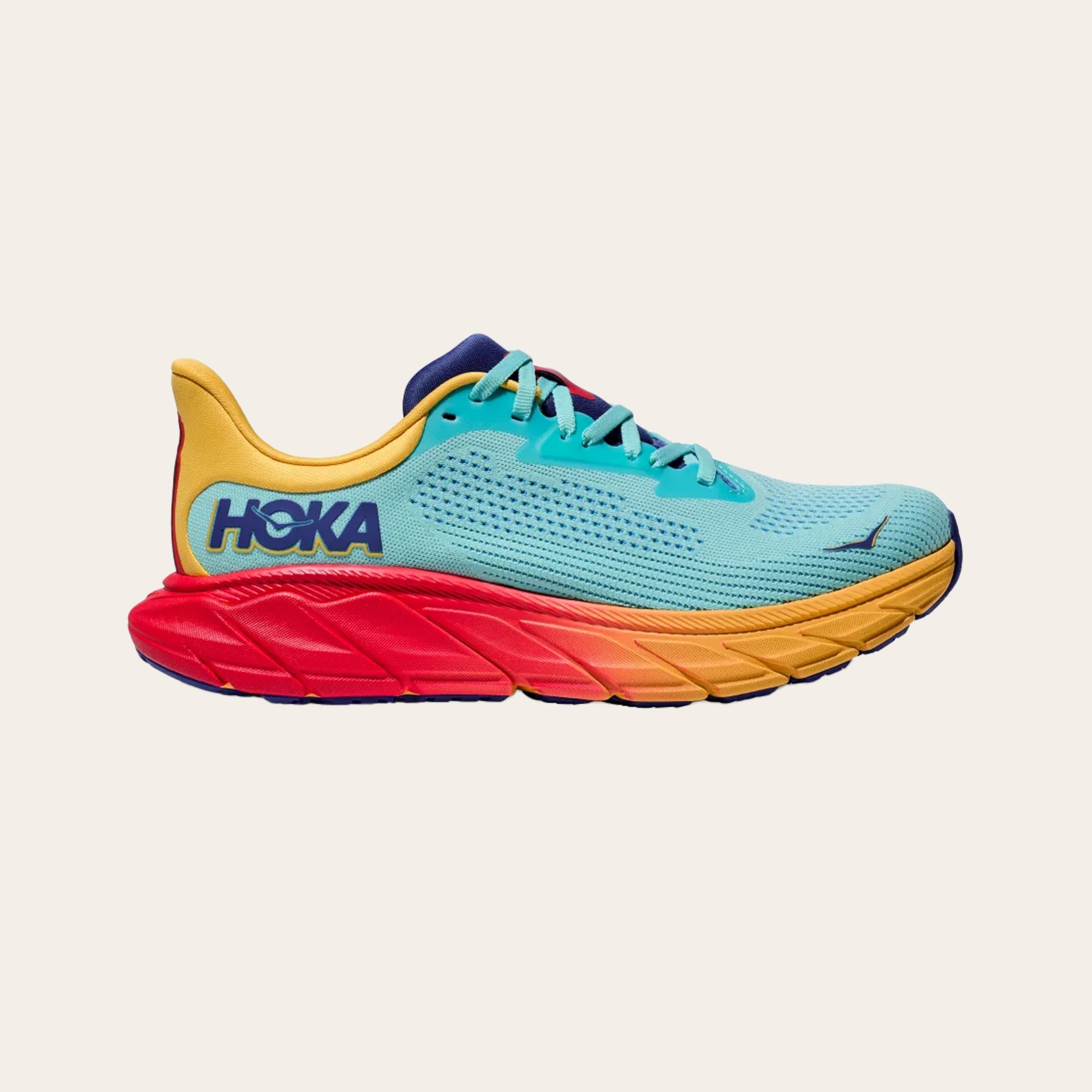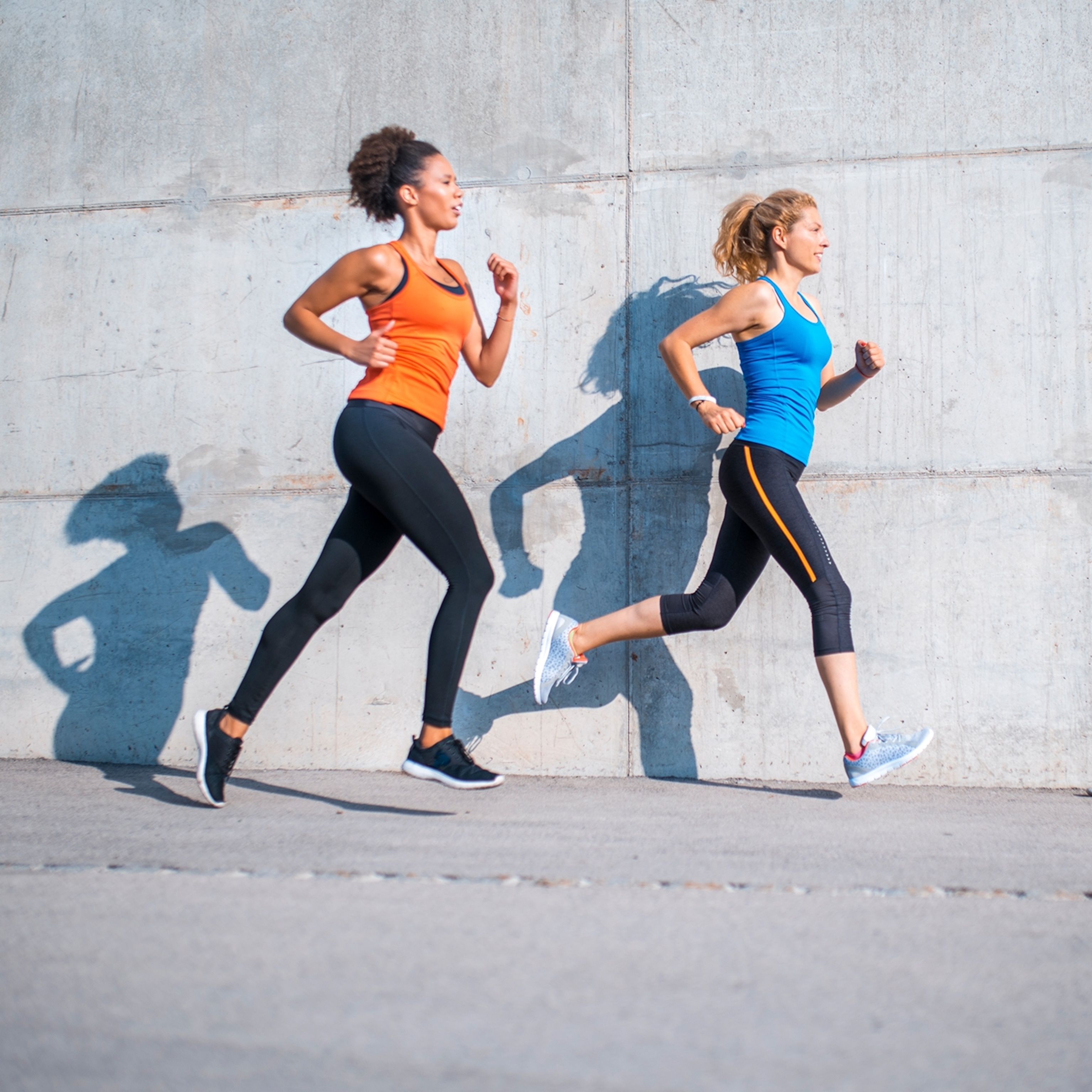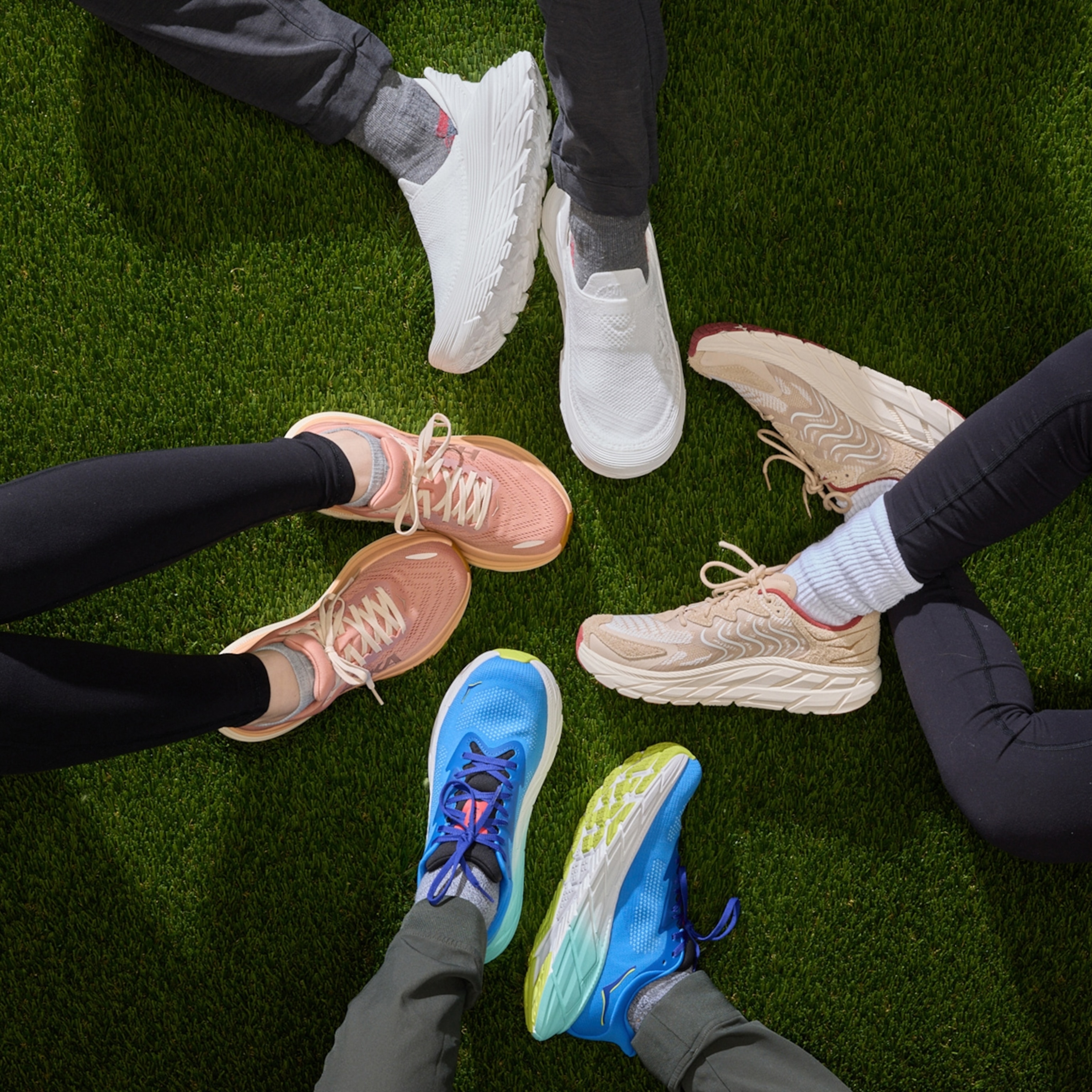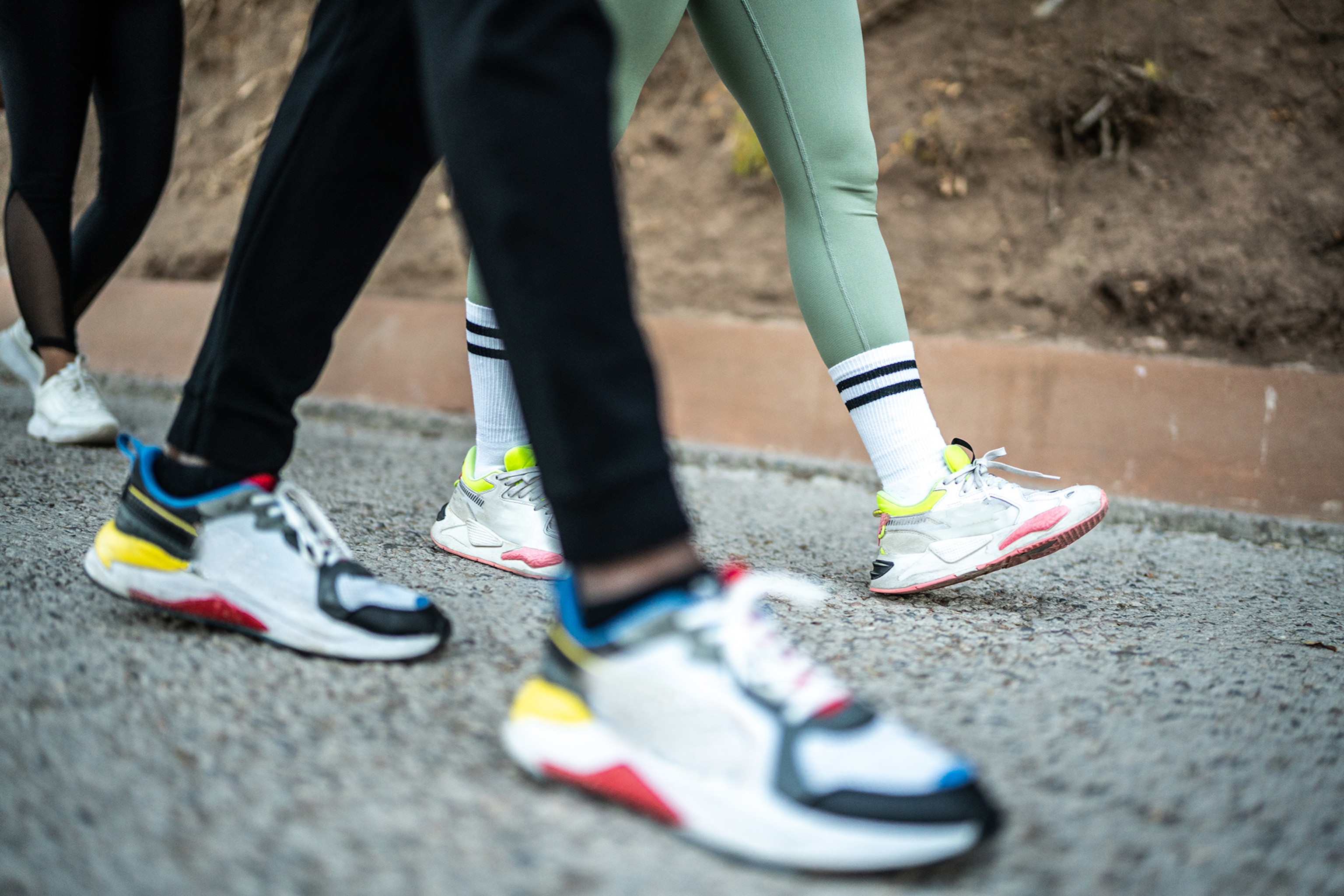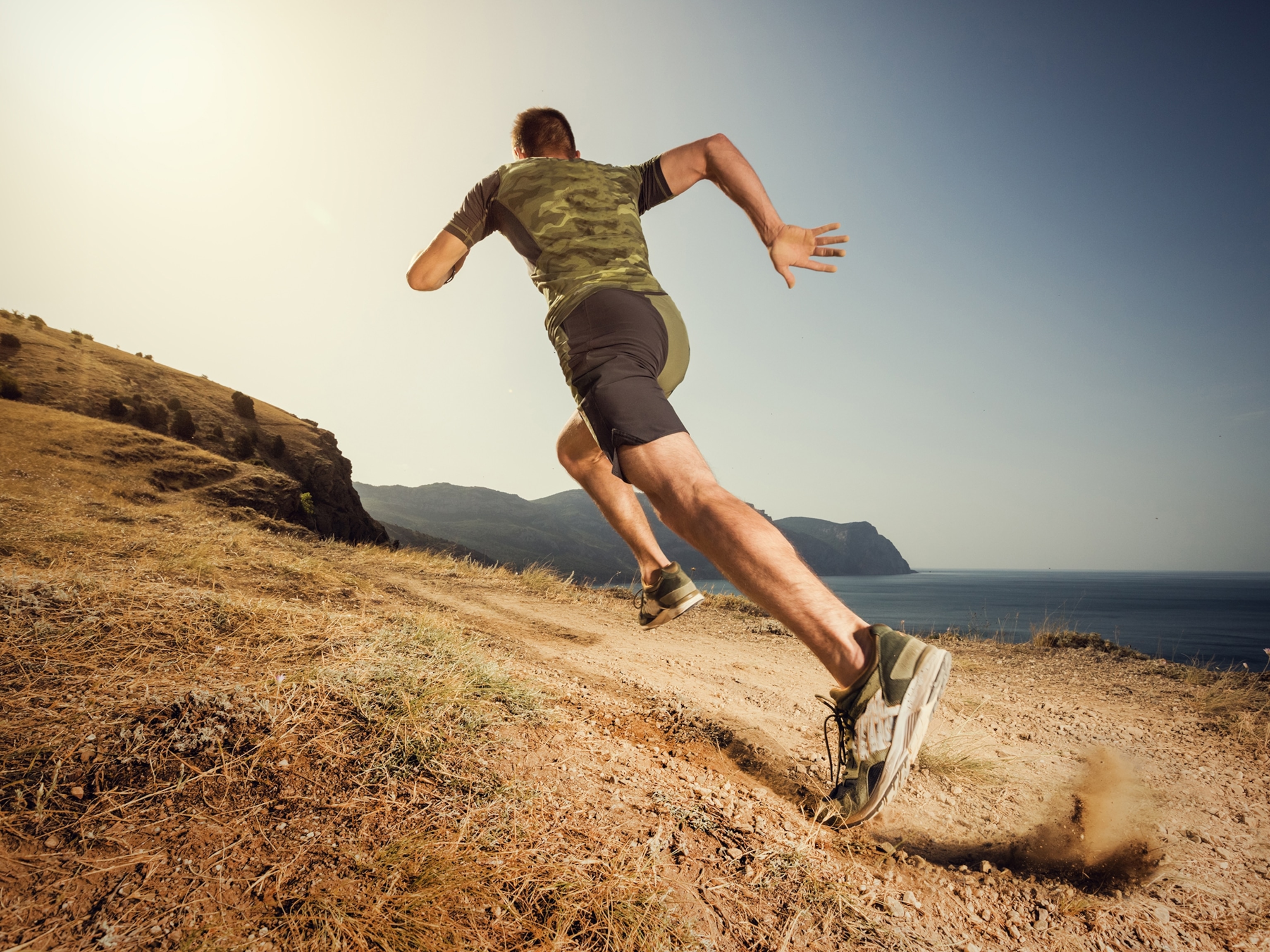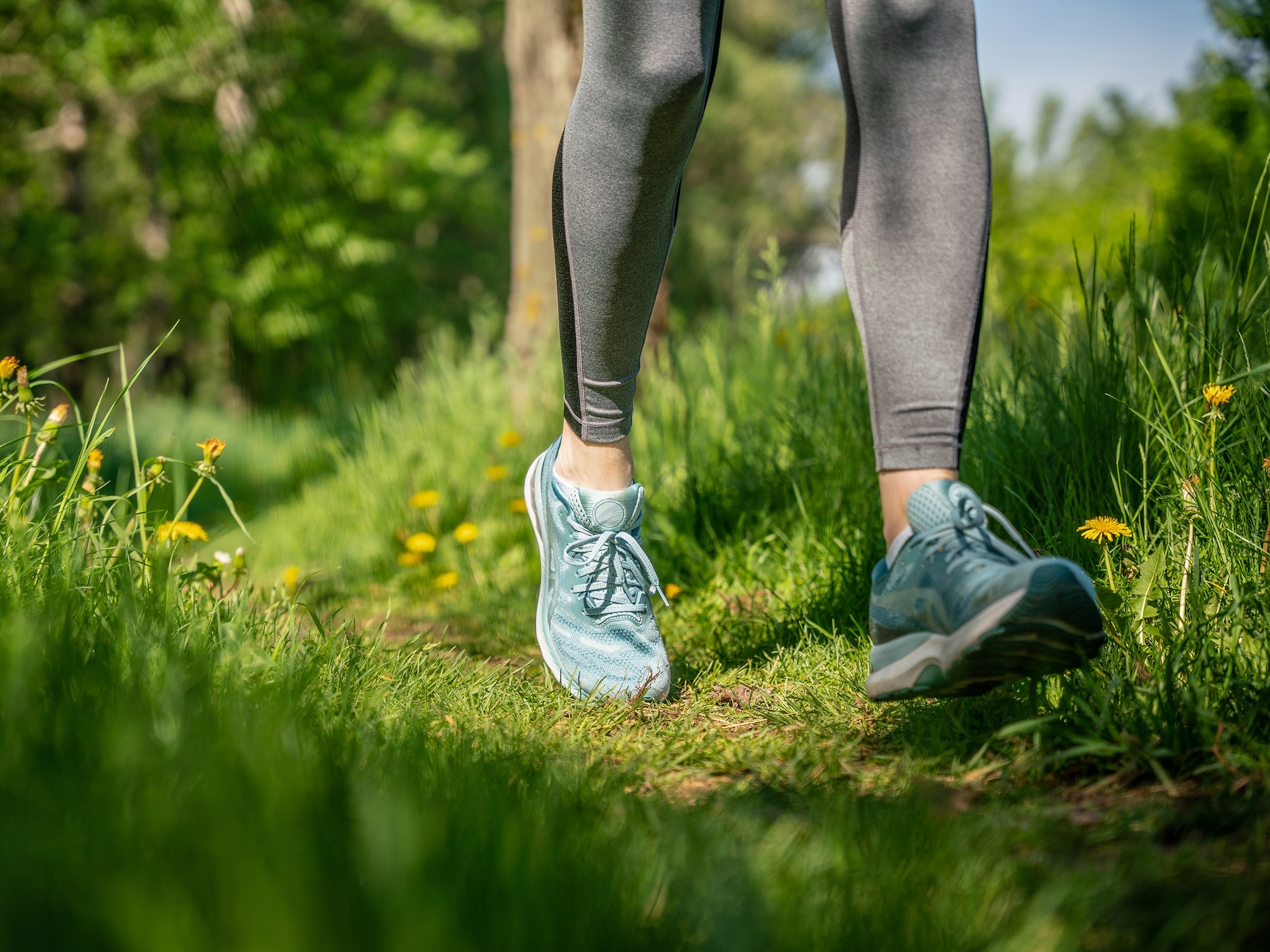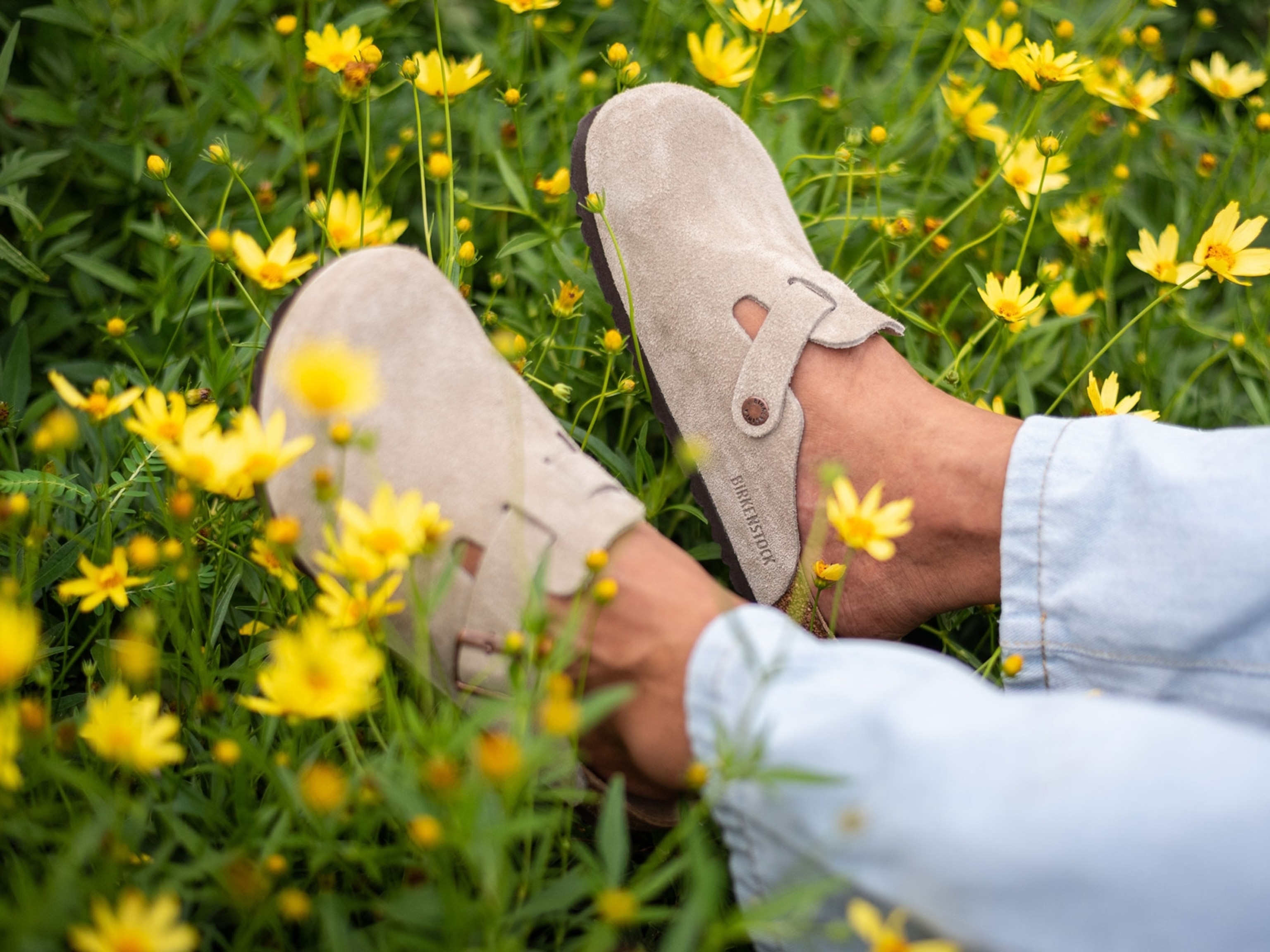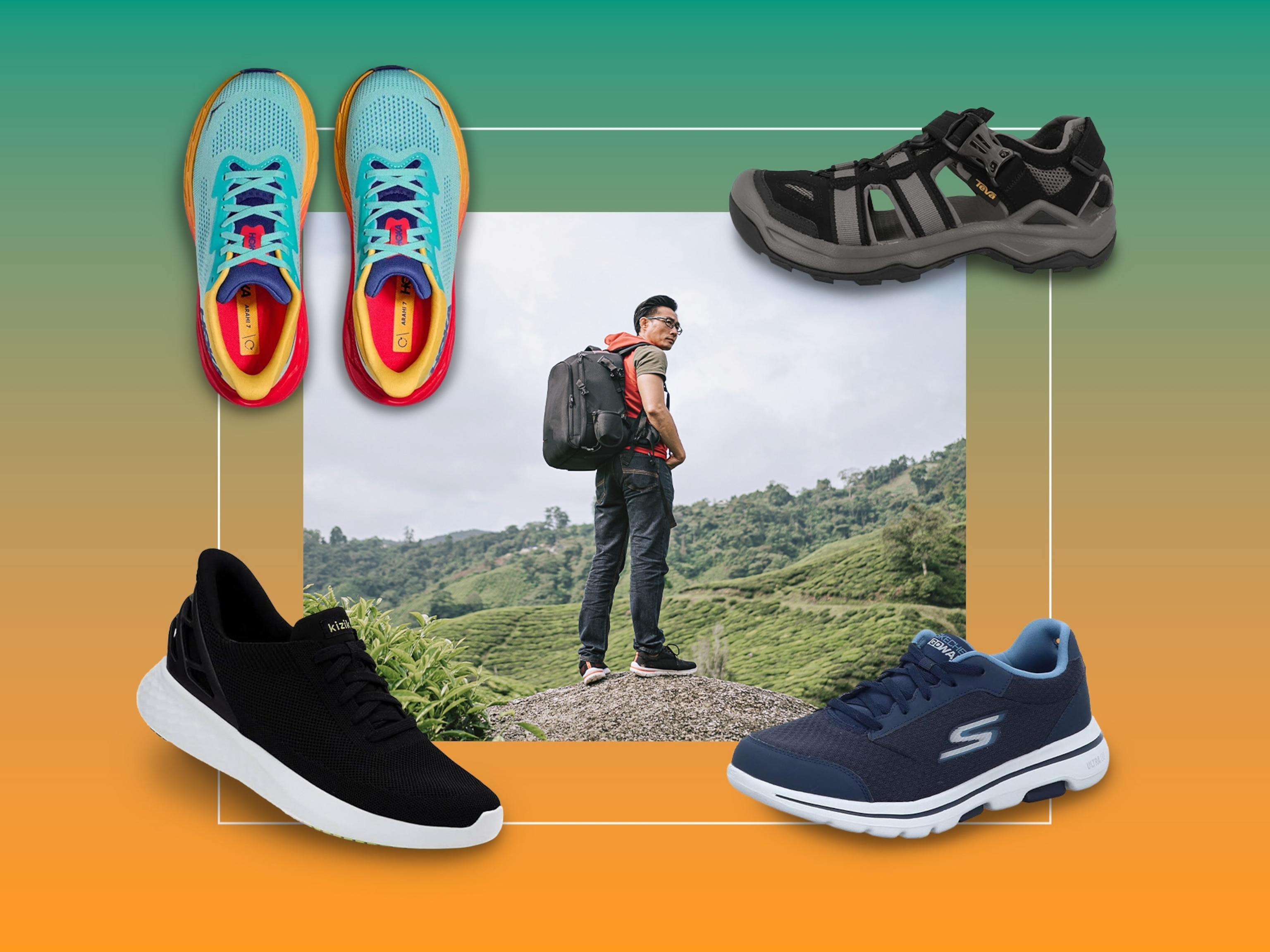These are the 9 best Hoka running shoes
Whether you're a marathon runner, have flat feet, or just need extra stability, these are the perfect sneakers for all kinds of runners.
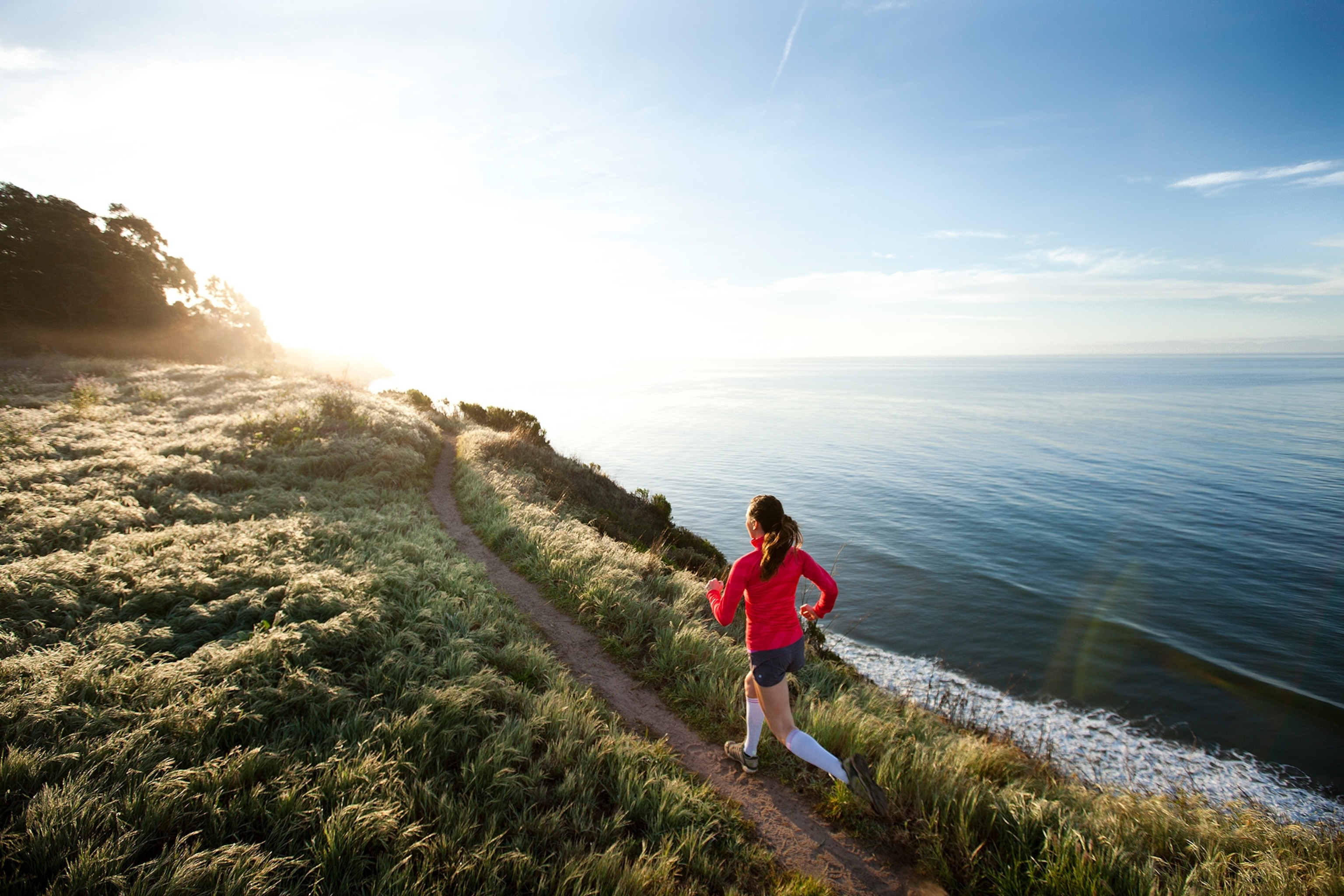
Hoka is far from the only shoe brand built for runners. But its cult-like following suggests it’s tapped into an ergonomic shape and fit that feels tailor-made for the sport. Emma Graves, a certified personal trainer at Life Time Fitness in Chicago, Illinois, who’s also training for the 2024 Chicago Marathon, points to specific features that make Hokas stand out. These include the “Active Foot Frame” to help stabilize the heel and the “Meta-Rocker” for enhancing gait.
Choosing the right pair of Hoka running shoes is a bit more nuanced. While our top pick, the Hoka Clifton 9, offers a versatile blend of cushioning and durability, Graves says to consider your foot shape and primary workout type to find the right model for you. Here are all of our favorites.
Our picks for the best Hoka running shoes
• Best Hoka running shoes for women: Hoka Bondi 8
• Best Hoka running shoes for men: Hoka Speedgoat 5
• Best Hoka running shoes for flat feet: Hoka Gaviota 5
• Best Hoka shoes for marathon running: Hoka Mach 6
• Best Hoka running shoes for plantar fasciitis: Hoka Skyward X
• Best Hoka running shoes for high arches: Hoka Cielo X1
• Best Hoka shoes for running and walking: Hoka Transport
• Best Hoka running shoes for bad knees: Hoka Arahi 7
The best Hoka shoes for running
These are the best Hokas, whether you’re running a marathon or need a well-cushioned pair with arch support.
Best Hoka running shoes overall: Hoka Clifton 9
Buy it now at Hoka
Why we like it: The Clifton 9 is our top choice for good reason. It’s recommended by the American Podiatric Medical Association (APMA) and weighs just 7.3 ounces. Yet it delivers the brand’s signature cushioning, which is symmetrical from heel to toe. That means you’re getting consistent support with every step—and those steps can keep coming, thanks to the 9’s reportedly durable outsole. One marathoner swears by this pair, saying she’s logged as much as 450 miles on a single pair.
While feet of all shapes and sizes can find a comfortable home in the Clifton 9’s plush heel, Meta-Rocker design, and engineered knit upper, Graves says it’s especially great for runners with high arches. We’re also fans of the gusseted tongue that holds it in place and the full compression EVA midsole that helps absorb impact. The fun color options are a bonus.
Keep in mind: Some customers note the latest iteration of Cliftons is wider than previous versions.
Product details: Weight: 7.3 oz. | Heel-to-toe drop: 5mm. | Stability: Neutral | Cushion: Balanced
(We wore Hoka’s Clifton 9 on a 600-mile journey. Here’s our review.)
Best Hoka running shoes for women: Hoka Bondi 8
Buy it now at Hoka
Why we like it: Although the Hoka Bondi 8 isn’t designed specifically for women, it’s a favorite among female runners due to its extended heel and plush cushioning. Customers report the springy foam midsole is more forgiving for those with painful conditions like plantar fasciitis, which women are more likely to develop, according to one study. Because that pain tends to manifest in the heel, Graves says the Bondi 8’s design, which includes soft heel beveling, may help reduce pressure and discomfort in that area.
Another feature we love for both women and men is the shoe’s memory foam collar. It helps keep the ankle cradled, which may prevent blisters—a runner’s worst nightmare. Like most Hoka shoes, this style is also APMA-approved and made with recycled materials, according to the company.
Keep in mind: Although Hokas are known for coming in brightly colored hues, quite a few customers say this model appears more saturated in the photos than in real life.
Product details: Weight: 8.9 oz. | Heel-to-toe drop: 4mm. | Stability: Neutral | Cushion: Plush
(These are the 8 best running shoes for women.)
Best Hoka running shoes for men: Hoka Speedgoat 5
Buy it now at Hoka
Why we like it: Although the Hoka Speedgoat 5 is technically a trail-running shoe, we like that the grippy 5mm lugs can conquer pavement in a pinch. Regardless of what terrain it’s tackling, this shoe is all about traction thanks to the “Vibram MegaGrip” outsole rubber and protective toe cap that helps deflect debris. On flat surfaces, you’ll notice the slight rocker-shaped geometry propelling you forward with the same amount of oomph you need to push up a hill.
With a name honoring ultra-running legend Karl Meltzer (aka “the Speedgoat”), this shoe is constructed to tackle some serious distances. That’s why the mesh upper is designed to be breathable and durable, while the compression-molded EVA midsole provides just the right amount of pop in each step. Even though it’s slightly heavier than other models, it’s still on the lighter side for a trail shoe.
Keep in mind: If you’re not used to running with larger lugs, this shoe may take some getting used to.
Product details: Weight: 10.3 oz. | Heel to toe drop: 4mm. | Stability: Neutral | Cushion: Balanced
(These are the 8 best running shoes for men.)
Best Hoka running shoes for flat feet: Hoka Gaviota 5
Buy it now at Hoka
Why we like it: About a third of the population have flat feet, which doctors say should be addressed with motion-control shoes to avoid injury. However, anyone who’s worn a pair will tell you how clunky and stiff they can feel. The Hoka Gaviota 5 is a great shoe for runners with flat feet. The stability features help prevent inward rolling or overpronation and there’s enough cushion to absorb shock that can contribute to tired feet, especially if you don’t have arches.
Some other highlights include a mesh upper with a plush collar that hugs your ankles and an early-stage Meta-Rocker design that helps guide your foot through each stride. If you want to add more stable shoes to your collection, Graves also recommends the Arahi 7 (see details below), which is also designed to prevent the foot from rolling too far inward, a common symptom for people with flat feet.
Keep in mind: These shoes are much wider than others, which is ideal for people with flat feet, but may be uncomfortable for those with narrow feet.
Product details: Weight: 9.1 oz. | Heel to toe drop: 6mm. | Stability: Stable | Cushion: Plush
Best Hoka shoes for marathon running: Hoka Mach 6
Buy it now at Hoka
Why we like it: Going the distance requires a solid pair of sneaks, and the Hoka Mach 6 offers a great, lightweight yet responsive option. We think this shoe was made for runners who want to feel fast and efficient, whether they’re training for speed or churning through the miles on race day. The foam cushioning is a standout—more low-profile than most Hoka designs, it helps you push off each step with power.
Another major upgrade to the Mach line is an engineered mesh upper that’s designed to be both breathable and secure. They’re so secure that one runner says wearing the Mach 6 regularly helps them hit an eight-miler. Pair that with the new minimal collar for a heck of a race-day shoe.
Keep in mind: Many customers say this line runs on the narrow side. Runners with wider feet may want to go up a size.
Product details: Weight: 6.7 oz. | Heel to toe drop: 5mm. | Stability: Neutral | Cushion: Responsive
Best Hoka running shoes for plantar fasciitis: Hoka Skyward X
Buy it now at Hoka
Why we like it: No one knows heel pain quite like those with plantar fasciitis. If you regularly find yourself slowing down due to this common condition, you may have luck with the Hoka Skyward X. It’s designed with a built-in suspension system that compresses and springs back with each step. This (along with the Meta-Rocker frame) may help reduce the impact on your feet, allowing you to glide through your run.
Customers report that the midsole foam made of PEBA (poly ether-block-amide, a low-density advanced thermoplastic elastomer known for its temperature resilience) feels plush and cushiony underfoot. At the same time, they offer superior energy return (or bounce). Enhancing the comfort, the knit upper offers a snug fit and support without rubbing up against pressure points.
Keep in mind: These are the tallest and most expensive shoes on this list.
Product details: Weight: 9.20 oz. | Heel to toe drop: 5mm. | Stability: Neutral | Cushion: Plush
(These are the best walking shoes for plantar fasciitis.)
Best Hoka running shoes for high arches: Hoka Cielo X1
Buy it now at Hoka
Why we like it: Higher-than-normal arches can be just as problematic as low-to-no arches. Called pes cavus, high arches can force the ball of your foot to carry more weight than it should, which can lead to pain. To counteract this condition, you need a shoe that provides enough cushioning to absorb the shock as your foot strikes the ground.
The Hoka Cielo X1 is designed with a winged carbon fiber plate that’s tucked between two layers of firm PEBA midsole for maximum responsiveness that’s as bouncy as it is resilient. The knit upper helps keep your feet cool and dry, while the strategic rubber sole adds minimal weight to help keep this shoe feeling as light as possible.
Keep in mind: The Cielo X1 is heavy and more expensive than most Hoka shoes.
Product details: Weight: 9.3 oz. | Heel to toe drop: 7mm. | Stability: Neutral | Cushion: Responsive
Best Hoka shoes for running and walking: Hoka Transport
Buy it now at Hoka
Why we like it: If you’re looking for a shoe for your Saturday evening runs and your Sunday morning walks, the Hoka Transport is your best bet. While it still has that classic Hoka rocker shape, this shoe is much more subtle in terms of stack height. That’s all thanks to the EVA midsole that provides cushion for high-impact activities, while being flexible and responsive enough to take you through your day-to-day errands.
The Transport is designed with 360 degrees of reflectivity, so you can stretch your workouts to early in the morning or late in the evening. We also love that the company says it incorporates water-resistant and sustainable materials in this model and the quick-toggle lace system, which makes it easy to get up and go.
Keep in mind: There are few color options for wide sizes.
Product details: Weight: 9.1 oz. | Heel to toe drop: 5mm. | Stability: Neutral | Cushion: Balanced
(These are the 8 best Hoka shoes for walking.)
Best Hoka running shoes for bad knees: Hoka Arahi 7
Buy it now at Hoka
Why we like it: You may think that cushioned shoes benefit most people, but a 2020 study found that over half of healthcare professionals recommend that runners with knee pain wear shoes with less cushioning. If you suffer from achy joints, a balanced shoe like the Hoka Arahi 7 may be better than a plush Bondi 8. This is especially true considering that the Arahi 7 is designed with a unique “J-Frame” technology that Hoka says can counteract overpronation, a common cause of knee pain.
But there’s still plenty of cushion to go around. The updated Arahi 7 has a plusher tongue and a snug, flat-knit upper that helps keep your foot in place even as you speed up. This model is also constructed with gait-correcting stability and energy return in mind for help with speed.
Keep in mind: These run narrow, so consider sizing up if you have wider feet.
Product details: Weight: 8.1 oz. | Heel to toe drop: 5mm. | Stability: Stable | Cushion: Balanced
(Why the world's oldest sport is still one of the best exercises)
How we chose the best Hoka running shoes
Trying to identify the best Hoka shoes for running in a vast line of options can be overwhelming. To help you find the right pair, we focused on these expert-recommended attributes:
- Third-party reviews: We combed through online reviews and feedback from runners who have tried Hoka shoes. This gave us a good idea of how satisfied customers were with each model overall.
- Weight: No one wants to feel weighed down during a run, so we focused on lighter-weight shoes that still offer adequate cushioning.
- Foot conditions: High arches, plantar fasciitis, flat feet, knee pain—runners tend to have an array of ailments. We consulted physical therapists, running coaches, and fellow runners to identify the best Hoka shoes for a variety of common conditions.
- Cushioning: With a reputation for providing ample cushioning, we made sure all our selections offered plenty of plush support without sacrificing responsiveness or stability.
- Stability: While some runners may prefer a neutral shoe, others may need more support to prevent overpronation or protect against injuries. We included a range of stability options in our top picks.
Tips for buying running shoes
Before you throw that new pair of Hokas into your shopping cart, here are a few expert-recommended tips to keep in mind.
Consider your specific needs
It’s easy to give in to the Hoka hype and buy the latest and greatest model. But Graves urges runners to be thoughtful about factors such as arch height, foot shape, running style, and terrain. A friend may rave about a shoe, “but that shoe could potentially not work with the shape of your foot and your style of training,” she says. “Do what’s best for you versus basing your decisions off of what others are doing.”
Find your running gait
You can’t shop for your needs if you don’t know what they are. Angela McAusland, a certified running coach based in Bath, England, advises visiting your local specialty running store for a gait analysis. This process involves a professional observing your stride on a treadmill to determine how much your foot rolls inward when you hit the ground (known as pronation). People with overpronation need a shoe with stability, while people with regular pronation need a shoe that’s more neutral. When shopping online for Hokas, check the pronation levels noted for each shoe on the company’s website.
Try on as many styles as you can
Niraj Vora, physical therapist, run coach, and co-founder of The Stride Shop in New Orleans, Louisiana, says no amount of online research can tell you how a shoe will feel on your foot—especially a unique shoe like Hokas. Some people like the wider toe box and the momentum of the rocker bottom, while others find it too loose and unstable. “Your history will tell you a lot,” he says. “If you have had success wearing a shoe that gives you a lot of cushion and is light, then stick with it. Ignore the flashy designs and choose results.”
Rotate your go-to pair
If you have the budget for it, consider investing in two or three pairs of running shoes. Vora says to think of your running shoes like the tires on your car: they need to be rotated regularly. By having a couple of pairs to hit the pavement, you’ll extend the life of each shoe.
Frequently asked questions
Which Hoka is best for seniors?
While Graves recommends the plush Bondi 8 to help absorb the impact on joints, Vora advises seniors to avoid Hokas altogether if balance is an issue. The cushioning may feel great, but he notes there’s lots of material between the foot and the ground. “Because many seniors have deteriorating balance, this is not ideal and may feel unstable.”
What is different about Hoka running shoes compared to others?
Vora says the primary difference between Hokas and other brands is its large stack height (which refers to the amount of material between the foot and the ground). These shoes are unique in the level of cushioning they provide while remaining relatively lightweight.
How do I determine the best running shoe for me?
Based on expert interviews, the best way to find the right running shoes for you is to start with your specific needs (arch height, foot shape, running style, and terrain), get a gait analysis to determine pronation levels, try on multiple styles in person, and rotate your go-to pair for longevity.
References
Buchanan, B. et al. (2024). Plantar Fasciitis. Retrieved from: https://www.ncbi.nlm.nih.gov/books/NBK431073/
Dhillon, G. et al. (2020). What are the perceptions of runners and healthcare professionals on footwear and running injury risk? BMJ Open Sport & Exercise Medicine. Retrieved from: https://www.ncbi.nlm.nih.gov/pmc/articles/PMC7328975
Raj, M. et al. (2023). Pes Planus. Retrieved from: https://www.ncbi.nlm.nih.gov/books/NBK430802/
Seaman, T. et al. (2023). Pes Cavus. Retrieved from: https://www.ncbi.nlm.nih.gov/books/NBK556016/
Zhaorui, X. et al. (2022). Super-elastic and structure-tunable poly(ether-block-amide) foams achieved by microcellular foaming. Retrieved from: https://www.sciencedirect.com/science/article/abs/pii/S2212982021003747
Go Further
Animals
- What would the world look like without mosquitoes?What would the world look like without mosquitoes?
- Social media loves to villainize dolphins. Here's why it's wrong.Social media loves to villainize dolphins. Here's why it's wrong.
- How did wolves evolve into dogs? New fossils provide cluesHow did wolves evolve into dogs? New fossils provide clues
- This unorthodox method is saving baby parrots from extinctionThis unorthodox method is saving baby parrots from extinction
- A deadly disease that affects cats big and small found in U.S.A deadly disease that affects cats big and small found in U.S.
Environment
- ‘Corn sweat’—and other weird weather phenomena—explained‘Corn sweat’—and other weird weather phenomena—explained
- A sea tornado sank a yacht. We might see them more often.A sea tornado sank a yacht. We might see them more often.
- How billions of dollars are revolutionizing ocean explorationHow billions of dollars are revolutionizing ocean exploration
- Where to go stargazing in Chile according to a local astronomer
- Paid Content
Where to go stargazing in Chile according to a local astronomer
History & Culture
- Did Babe Ruth really ‘call’ this legendary home run?Did Babe Ruth really ‘call’ this legendary home run?
- The real history behind the legend of China's Monkey KingThe real history behind the legend of China's Monkey King
- How new technology transformed the American workforceHow new technology transformed the American workforce
- This secret Civil War sabotage mission was doomed from the startThis secret Civil War sabotage mission was doomed from the start
- This rare burial site reveals secrets about the Sahara's lush pastThis rare burial site reveals secrets about the Sahara's lush past
Science
- Why some say tennis is 'the world's healthiest sport'Why some say tennis is 'the world's healthiest sport'
- Your body ages rapidly at 44 and 60. Here's how to prepare.Your body ages rapidly at 44 and 60. Here's how to prepare.
- How do gold nuggets form? Earthquakes may be the keyHow do gold nuggets form? Earthquakes may be the key
- Astronauts getting stuck in space is more common than you thinkAstronauts getting stuck in space is more common than you think
Travel
- These are the must-see sights of Italy's Veneto regionThese are the must-see sights of Italy's Veneto region
- A guide to St John's, Atlantic Canada's iceberg capitalA guide to St John's, Atlantic Canada's iceberg capital
